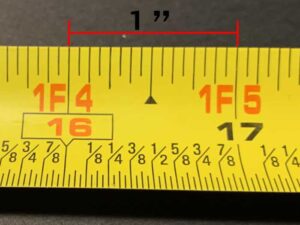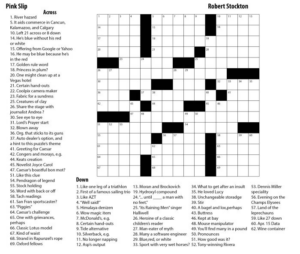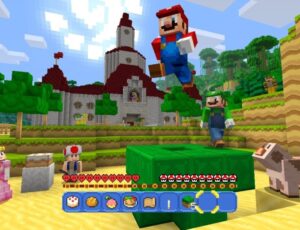Embark on a transformative journey with our pescatarian meal plan for weight loss, meticulously designed to help you shed unwanted pounds while nourishing your body with the goodness of the sea.
Discover the secrets to successful weight loss with a pescatarian diet, unlocking the power of lean protein, healthy fats, and essential nutrients to fuel your body and satisfy your cravings.
Introduction
A pescatarian diet is a type of diet that includes fish and seafood, but excludes other types of meat. It is a healthy way to lose weight because it is high in protein and low in saturated fat. Meal planning is an important part of any weight loss plan, and it is especially important for pescatarians because it can help ensure that they are getting all the nutrients they need.
One of the benefits of a pescatarian diet is that it is high in protein. Protein is an essential nutrient that helps build and repair tissues, and it can also help keep you feeling full and satisfied after eating. Fish and seafood are both excellent sources of protein, and they are also low in saturated fat.
Saturated fat is a type of fat that can raise your cholesterol levels and increase your risk of heart disease.
Meal Planning
Meal planning is an important part of any weight loss plan, but it is especially important for pescatarians. This is because pescatarians need to make sure that they are getting all the nutrients they need, including protein, omega-3 fatty acids, and vitamin B12.
Meal planning can help ensure that you are getting all the nutrients you need, and it can also help you stay on track with your weight loss goals.
When meal planning, it is important to include a variety of foods from all food groups. This will help ensure that you are getting all the nutrients you need. Some good choices for pescatarians include:
- Fish and seafood
- Fruits and vegetables
- Whole grains
- Legumes
- Nuts and seeds
Nutrient Requirements
To maintain a healthy body and support weight loss goals, a pescatarian diet should provide the body with essential nutrients. These include protein, carbohydrates, fats, vitamins, and minerals. The recommended daily intake of these nutrients varies depending on factors such as age, sex, and activity level.
The table below provides general recommendations for the daily intake of essential nutrients for a pescatarian diet.
Macronutrients
| Nutrient | Recommended Daily Intake |
|---|---|
| Protein | 1.2-1.7 grams per kilogram of body weight |
| Carbohydrates | 45-65% of total calories |
| Fat | 20-35% of total calories |
Micronutrients
| Nutrient | Recommended Daily Intake |
|---|---|
| Vitamin B12 | 2.4 micrograms |
| Vitamin D | 600-800 IU |
| Iron | 18 milligrams for women, 8 milligrams for men |
| Calcium | 1,000 milligrams |
| Omega-3 fatty acids | 500-1,000 milligrams |
Meal Planning Principles
When crafting a meal plan for weight loss, adhering to specific principles is crucial. These principles guide your food choices and ensure a balanced and sustainable approach to shedding extra pounds. Understanding and implementing these principles will empower you to create a plan that supports your weight loss goals.
The key principles of meal planning for weight loss include:
Calorie Control
- Calorie control is the foundation of any weight loss plan. It involves consuming fewer calories than you burn, creating a calorie deficit that forces your body to tap into stored fat for energy.
- To determine your daily calorie needs, consider factors such as age, weight, height, activity level, and weight loss goals.
- Use calorie-tracking apps or consult with a registered dietitian to personalize your calorie target.
Portion Control
- Portion control is essential for managing calorie intake and preventing overeating. It involves measuring and limiting the amount of food you consume at each meal.
- Use measuring cups and spoons to ensure accurate portion sizes.
- Read food labels carefully to understand serving sizes and avoid consuming excessive calories.
Nutrient Balance
- While calorie control is important, it’s equally crucial to ensure your meal plan provides adequate nutrients.
- Focus on consuming nutrient-rich foods from all food groups, including fruits, vegetables, lean protein, whole grains, and healthy fats.
- A balanced diet supports overall health, boosts metabolism, and promotes satiety, reducing cravings and overeating.
Creating a Sustainable and Flexible Meal Plan
To ensure the longevity of your weight loss efforts, it’s essential to create a meal plan that is sustainable and flexible.
- Choose foods you enjoy:This will make it easier to stick to your plan long-term.
- Include variety:Eating the same foods every day can lead to boredom and cravings.
- Plan ahead:Preparing meals and snacks in advance can help you avoid unhealthy choices when pressed for time.
- Allow for flexibility:Life happens, so don’t be too rigid with your meal plan. Allow for occasional indulgences without derailing your progress.
- Seek professional guidance:If you struggle with meal planning or have specific dietary needs, consider consulting with a registered dietitian.
Sample Meal Plan
Here’s a 7-day sample meal plan that meets the nutrient requirements and meal planning principles for a pescatarian diet for weight loss. It provides approximately 1,500-1,800 calories per day and includes a variety of pescatarian-friendly foods and recipes.
Remember, this is just a sample plan, and you may need to adjust it based on your individual calorie needs and preferences. It’s always best to consult with a registered dietitian or other qualified healthcare professional before making any major changes to your diet.
Day 1
- Breakfast:Oatmeal with berries and nuts (1 cup cooked oatmeal, 1/2 cup berries, 1/4 cup nuts)
- Lunch:Grilled salmon salad with mixed greens, quinoa, and vegetables (4 ounces grilled salmon, 2 cups mixed greens, 1 cup cooked quinoa, 1 cup vegetables)
- Dinner:Lentil soup with whole-wheat bread (1 cup lentil soup, 2 slices whole-wheat bread)
- Snack:Apple with peanut butter (1 apple, 2 tablespoons peanut butter)
Day 2
- Breakfast:Scrambled eggs with whole-wheat toast and avocado (2 eggs, 2 slices whole-wheat toast, 1/2 avocado)
- Lunch:Tuna salad sandwich on whole-wheat bread (1 can tuna, 1/4 cup celery, 1/4 cup onion, 1/4 cup mayonnaise, 2 slices whole-wheat bread)
- Dinner:Grilled shrimp with roasted vegetables and brown rice (4 ounces grilled shrimp, 1 cup roasted vegetables, 1 cup cooked brown rice)
- Snack:Greek yogurt with berries (1 cup Greek yogurt, 1/2 cup berries)
Day 3
- Breakfast:Smoothie made with fruit, yogurt, and spinach (1 cup fruit, 1 cup yogurt, 1 cup spinach)
- Lunch:Leftover lentil soup
- Dinner:Baked salmon with roasted potatoes and asparagus (4 ounces baked salmon, 1 cup roasted potatoes, 1 cup asparagus)
- Snack:Trail mix (1/4 cup nuts, 1/4 cup seeds, 1/4 cup dried fruit)
Day 4
- Breakfast:Overnight oats with chia seeds and berries (1/2 cup oats, 1/2 cup milk, 1 tablespoon chia seeds, 1/2 cup berries)
- Lunch:Salad with grilled chicken, quinoa, and vegetables (4 ounces grilled chicken, 2 cups mixed greens, 1 cup cooked quinoa, 1 cup vegetables)
- Dinner:Vegetarian chili with cornbread (1 bowl vegetarian chili, 1 piece cornbread)
- Snack:Hummus with vegetable sticks (1/2 cup hummus, 1 cup vegetable sticks)
Day 5
- Breakfast:Whole-wheat pancakes with fruit syrup (2 whole-wheat pancakes, 1/4 cup fruit syrup)
- Lunch:Leftover vegetarian chili
- Dinner:Grilled tuna steak with roasted vegetables and quinoa (4 ounces grilled tuna steak, 1 cup roasted vegetables, 1 cup cooked quinoa)
- Snack:Cottage cheese with fruit (1/2 cup cottage cheese, 1/2 cup fruit)
Day 6
- Breakfast:Yogurt parfait with granola and berries (1 cup yogurt, 1/4 cup granola, 1/2 cup berries)
- Lunch:Salad with grilled salmon, mixed greens, and vegetables (4 ounces grilled salmon, 2 cups mixed greens, 1 cup vegetables)
- Dinner:Shrimp scampi with whole-wheat pasta (4 ounces shrimp scampi, 1 cup whole-wheat pasta)
- Snack:Apple with peanut butter (1 apple, 2 tablespoons peanut butter)
Day 7
- Breakfast:Whole-wheat toast with avocado and egg (2 slices whole-wheat toast, 1/2 avocado, 1 egg)
- Lunch:Leftover shrimp scampi
- Dinner:Baked cod with roasted vegetables and brown rice (4 ounces baked cod, 1 cup roasted vegetables, 1 cup cooked brown rice)
- Snack:Banana with almond butter (1 banana, 2 tablespoons almond butter)
Meal Preparation
Meal preparation is an essential part of any weight loss plan. By taking the time to plan and prepare your meals ahead of time, you can save time and money, and make it easier to stick to your healthy eating goals.
There are a number of different meal preparation techniques that you can use to save time and promote healthy eating. Some of the most popular techniques include:
Batch Cooking
Batch cooking is a great way to save time and money on meal preparation. Simply cook a large batch of food on the weekend, and then portion it out into individual meals that you can eat throughout the week.
There are a number of different foods that you can batch cook, including soups, stews, casseroles, and roasted vegetables. Once you have cooked your food, simply divide it into individual portions and store it in the refrigerator or freezer.
Freezing
Freezing is another great way to save time on meal preparation. Simply cook a large batch of food and then freeze it in individual portions. When you’re ready to eat, simply thaw the food and reheat it.
Freezing is a great way to preserve the nutrients in your food. It also helps to prevent food waste.
Using Meal Delivery Services
Meal delivery services can be a great way to save time on meal preparation. With a meal delivery service, you’ll receive pre-portioned meals that are delivered to your door. This can be a great option for people who are short on time or who don’t enjoy cooking.
There are a number of different meal delivery services available, so you can find one that fits your needs and budget.
Recipes and Cooking Tips
Pescatarian recipes can be both healthy and delicious. Here are a few of our favorites:
Cooking Fish and Seafood
Here are a few tips for cooking fish and seafood:
- Choose fresh fish and seafood.Fresh fish should have a firm texture and a mild smell. Avoid fish that is slimy or has a strong odor.
- Cook fish and seafood thoroughly.Fish and seafood should be cooked to an internal temperature of 145 degrees Fahrenheit. This will help to prevent foodborne illness.
- Use healthy cooking methods.Grilling, baking, and steaming are all healthy ways to cook fish and seafood. Avoid frying, as this can add unnecessary calories and fat.
- Season fish and seafood with herbs and spices.Herbs and spices can help to enhance the flavor of fish and seafood. Some good options include lemon, dill, garlic, and paprika.
Hydration and Exercise: Pescatarian Meal Plan For Weight Loss
Maintaining proper hydration is essential for overall well-being, and it plays a crucial role in weight loss. Consuming an adequate amount of water supports metabolism, helps curb cravings, and aids in digestion. Regular exercise, on the other hand, burns calories, builds muscle mass, and boosts metabolism.
Incorporating pescatarian dishes into your meal prep can be a great way to add variety and nutrition to your diet. With pescatarian meal prep ideas that include hearty salads, flavorful soups, and protein-packed entrees, you’ll have plenty of options to keep your meals exciting and satisfying.
By combining hydration and exercise, you can maximize your weight loss efforts.
Benefits of Hydration
- Boosts metabolism by up to 30% for an hour after drinking water.
- Suppresses appetite by creating a feeling of fullness.
- Enhances digestion and nutrient absorption.
- Lubricates joints and protects organs.
Tips for Staying Hydrated
- Drink a glass of water first thing in the morning.
- Carry a reusable water bottle throughout the day.
- Add fruits and vegetables to your water for flavor and hydration.
- Avoid sugary drinks like soda and juice.
Importance of Regular Exercise
Regular exercise is a cornerstone of weight loss. It burns calories, builds muscle mass, and boosts metabolism. Aim for at least 150 minutes of moderate-intensity exercise or 75 minutes of vigorous-intensity exercise per week.
Tips for Incorporating Exercise into a Busy Schedule
- Break up your workout into smaller chunks throughout the day.
- Find an activity you enjoy to make exercise more sustainable.
- Set realistic goals and gradually increase your activity level.
- Consider joining a fitness class or group for support and motivation.
Monitoring and Adjustments
Monitoring your progress is essential for a successful weight loss journey. By tracking your weight, measurements, and overall well-being, you can identify what’s working and what needs improvement.
Regularly weigh yourself, take body measurements, and assess your energy levels, mood, and sleep quality. This data will provide insights into your progress and help you make informed adjustments to your meal plan.
Adopting a pescatarian lifestyle doesn’t have to be daunting. In fact, with some smart meal prepping, you can enjoy a week’s worth of delicious and nutritious meals. Check out these pescatarian meal prep ideas for inspiration, including everything from easy breakfast bowls to satisfying dinner options.
Tracking Weight and Measurements, Pescatarian meal plan for weight loss
- Weigh yourself at the same time each week, wearing minimal clothing and on an empty stomach.
- Take body measurements, including your chest, waist, hips, and thighs, monthly.
Monitoring Overall Well-Being
- Pay attention to your energy levels throughout the day. Are you feeling energized or fatigued?
- Assess your mood. Are you experiencing any mood swings or irritability?
- Track your sleep quality. Are you getting enough restful sleep each night?
Ending Remarks
As you progress on your pescatarian weight loss journey, remember to embrace mindful eating, stay hydrated, and incorporate regular exercise into your routine. By following the principles Artikeld in this comprehensive guide, you can achieve your weight loss goals while enjoying the delectable flavors and health benefits of a pescatarian lifestyle.
FAQ Insights
What are the key benefits of a pescatarian diet for weight loss?
A pescatarian diet is rich in lean protein, healthy fats, and essential nutrients, which promote satiety, boost metabolism, and support overall well-being.
How does meal planning contribute to successful weight loss?
Meal planning helps you control calorie intake, ensure nutrient balance, and avoid impulsive eating, making it a crucial component of any weight loss journey.
What types of foods are included in a pescatarian meal plan?
A pescatarian meal plan includes a variety of fish, seafood, fruits, vegetables, whole grains, and healthy fats, providing a well-rounded and nutritious diet.





Leave a Comment